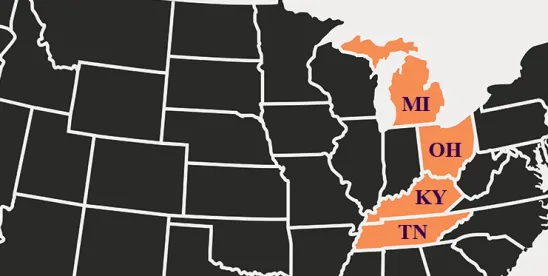The Sixth Circuit has weighed in on an issue that has divided the circuits: to state a claim under Title IX for “student-on-student sexual harassment,” must a victim actually experience further sexual harassment after the school learns of the prior harassment? Or is it enough that the victim is vulnerable to further harassment?
In Kollaritsch v. Michigan State, the Sixth Circuit (Batchelder op.; Thapar and Rogers joining and concurring separately) sided with the majority of circuits, which have required the victim to actually experience further harassment in order to show the school’s unreasonably indifferent response to “pervasive” sexual harassment “caused” further harassment.
The split stems from the Supreme Court’s 5-4 decision in Davis v. Monroe County Board of Education, 526 U.S. 629 (1999) (O’Connor, J.). The Sixth Circuit explained that, under Davis, a claim for student-on-student sexual harassment is comprised of “separate-but-related torts by separate-and-unrelated tortfeasors: (1) ‘actionable harassment’ by a student; and (2) a deliberate-indifference intentional tort by the school.”
What has divided the courts is the type of injury that must result from the school’s deliberate-indifference. Davis held that “the deliberate indifference must, at a minimum, cause students to undergo harassment or make them liable or vulnerable to it.” Davis, 526 U.S. at 645 (emphasis added).
The First and Tenth Circuits have broadly interpreted the “undergo” and “vulnerable” prongs as alternatives—meaning students can state a claim if the school’s deliberate indifference made them “vulnerable” to further harassment, even if no further harassment actually occurs. Farmer v. Kan. State Univ., 918 F.3d 1094, 1103–04 (10th Cir. 2019); Fitzgerald v. Barnstable Sch. Comm., 504 F.3d 165, 172 (1st Cir. 2007), rev’d on other grounds, 555 U.S. 246 (2009). Here, for example, some plaintiffs alleged MSU left them vulnerable to further harassment based on subsequent (non-sexual) campus encounters with their assailants.
The Sixth Circuit rejected this reading and the plaintiffs’ theory of the case, siding with the Eighth, Ninth, and Tenth Circuits. K.T. v. Culver-Stockton Coll., 865 F.3d 1054, 1057–58 (8th Cir. 2017); Escue v. N. Okla. Coll., 450 F.3d 1146, 1155–56 (10th Cir. 2006); Reese v. Jefferson Sch. Dist. No. 14J, 208 F.3d 736, 740 (9th Cir. 2000).
Judge Batchelder’s opinion held that the clauses do not describe two different types of injuries that satisfy Title IX. Rather, Davis described “two possible ways that the school’s ‘clearly unreasonable’ response could lead to further [i.e., actual] harassment: that response might (1) be a detrimental action, thus fomenting or instigating further harassment, or it might (2) be an insufficient action (or no action at all), thus making the victim vulnerable to, meaning unprotected from, further harassment.” Each depends on a “further incident of actionable sexual harassment” that would not have happened but for the school’s deliberate indifference.
Based on that holding, the Sixth Circuit dismissed the plaintiffs’ claims because none alleged that any further actionable sexual harassment occurred after MSU learned of the prior harassment. It remains to be seen when, if ever, the Supreme Court might take up this 4-2 circuit split.




 />i
/>i
